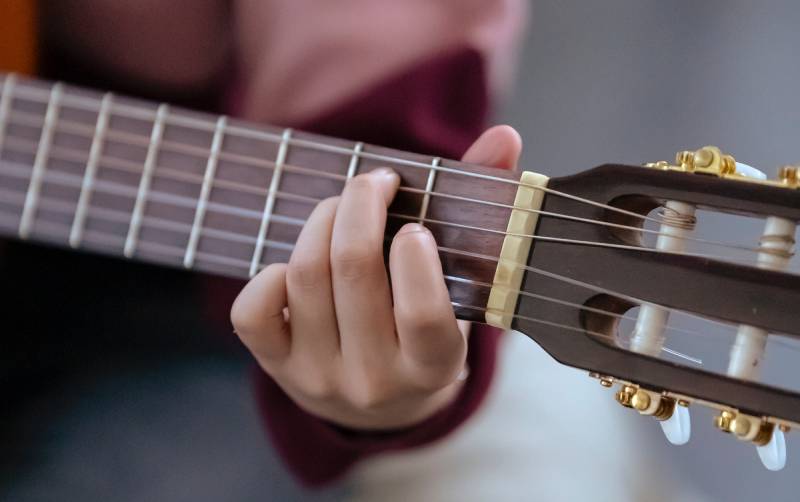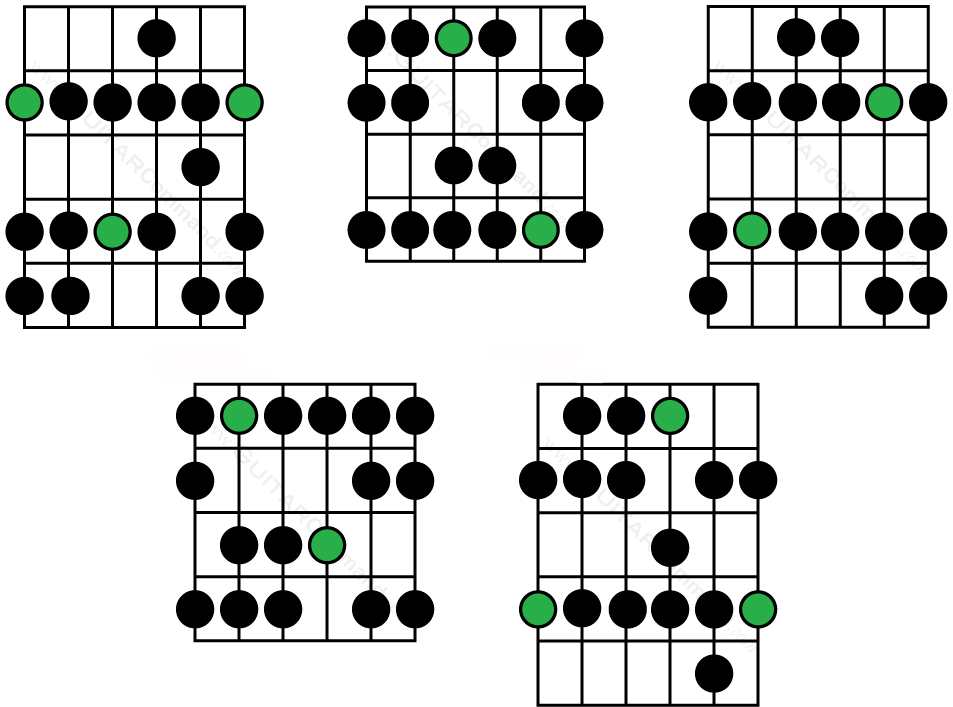
Leg Workouts: Dont skip It.
December 5, 2021
How To Take Care Of Your Dog
December 18, 2021- acoustic guitar lessons
- beginner chords
- beginners dominant chords
- chord diagrams
- chord diagrams with finger placements
- common guitar chords
- dominant chords
- easy guitar chords
- easy guitar lessons
- essential guitar chords
- first guitar lessons
- first lessons in guitar
- guitar beginner lessons
- how to practice guitar
- how to start learning the guitar
- learn guitar easily
- new to guitar
- starting guitar again
Beginners Dominant Chords
This is an extension of the easy guitar chords for beginners section, covering the Major and Minor essential chords. I would suggest that you proceed with easy dominant chords once you are familiar with the basic chords.
Link: Easy Beginners Chords for Guitar
Chord Diagrams (Re-Visited)
Just like Guitar Tablature, which we have already learned, chords have their own representation in diagram form.

This diagram shows you the neck of the guitar and the first few frets. It shows you the notes of the open strings and most importantly, it illustrates the numbers given to the fingers of the fretting hand.
These numbers will teach us to use the correct finger for each note played on individual strings.
Keep in mind that unlike tablature the numbers here DO NOT show the number of the fret that needs to be played but shows the finger that needs to be used in that position.
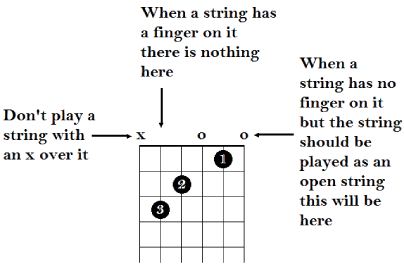
As we can see here, the 1–2–3 shows you that the index, middle, and ring finger are used for this chord.
An X denotes a string that is not to be played.
An O denotes a string that is played “open“, not pressed on any fret.
This is all there is to chord diagrams and now by looking at any chord diagram you should be able to play the chord.
The majority of the chords here are called OPEN chords: In music for stringed instruments, especially guitar, an open chord (open-position chord) is a chord that includes one or more strings that are not fingered.
As we progress, we shall learn the more technical Barre Chords which have all the strings fretted to play the entire chord. But that’s for later.
The Dominants
The term dominant is the terminology used in music to describe the fifth degree in a major or minor key.
So, if we take the key of C Major as an example:
C- D- E- F- G– A- B- C
The fifth degree, G, is the Dominant.
This is the dominant NOTE in the key of C major.
Dominant triad: Based on this dominant note, you can build the dominant triad. the dominant triad consists of (a root, a third, and a fifth).
Even though we are talking about the key of C major, we will build the dominant triad using G as the root. This is because G is the dominant note in the key of C Major.
Thus, the notes are:
G – B – D
This is the G Major chord.
So, the Dominant Chord in the key of C Major is G Major.
The Dominant Seven Chord: Now we get to the central point of this blog. The dominant seven chord is made up of the Root, the Major Third, Perfect Fifth, and the Minor Seventh.
Keeping to the Key of C major, we know the dominant is G major. Utilizing the formula we have the notes:
G – B – D – F
The dominant 7 chord is considered to be a major chord even though it has a minor 7 note in its formation.
Do not confuse this with a Minor 7 Chord OR a Major 7 Chord.
The extended dominant chords: These are the 9ths, 11ths, and 13ths which are extensions of the interval distances. Let us keep these for when the time is right.
Dominant 7 Chords

C 7.
The 6th string is not to be played and the 1st string is played “open“.
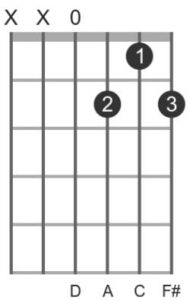
D 7.
The 5th and 6th strings are not played and the 4th string is open.
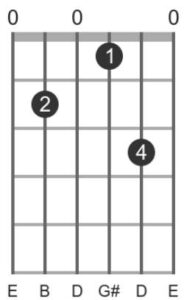
E 7.
All strings are played but the 1st, 4th, and 6th strings are open.
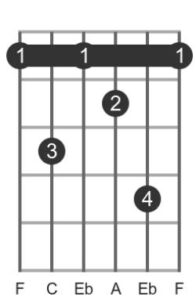
F 7.
Now, this is essentially a Barre chord. This is because the 1st or the Index finger is used as a bar across the entire fretboard.
This may be a bit difficult to play for starters, so initially, let the 6th string be unplayed and use the index finger to fret across the 1st to the 4th strings.
When you get used to fretting four strings simultaneously it would be easier to fret across all six.
G 7.
Simple chord with 3 open strings.

A 7
6th string is not played. Three open strings.

B 7.
Firstly, the 6th string is not played.
The 2nd string is open.
While you learn these new chords and expand your arsenal, do not forget to always practice and keep in touch with what you have learned.
Revision is the key to remembering, especially when it comes to muscle memory
Spend at least half your practice time to revise and a half on learning new things. Also do not try to learn new things every day. On those days the entire practice should be revision and perfection of what was learned.

